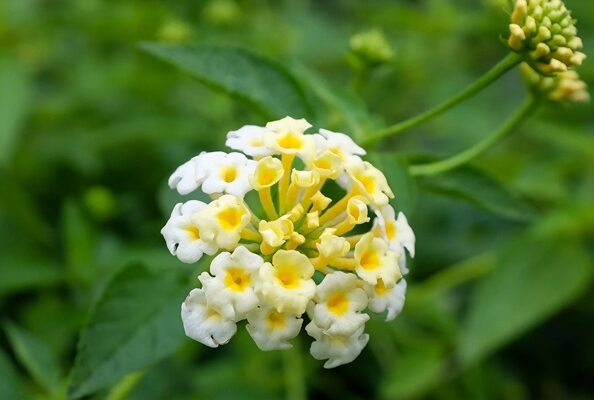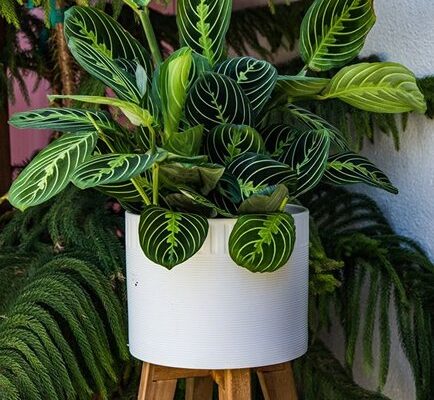Captivating Small Flowers for Your Garden
Consider exploring the fragrance and beauty of small flowers in your garden if you haven’t already. Tiny flowers have an undeniable charm, partly due to their abundance; a single plant can contain thousands of blossoms that attract butterflies with their shallow nectar tubes. Some plants produce small flowers that are rich in fragrance. Small flowers add a delicate touch to any garden.
While large, showy flowers can be attention-grabbing, small flowers can be equally captivating in their own way. These plants are a versatile element in garden design that can fill spaces where larger blooms may not be suitable or may not fit. You can incorporate them into a variety of settings, such as tucking them into a stone wall, planting them between pavers, using them as fillers, and adding them to cut flower arrangements. Despite their size, small flowers can be surprisingly hardy and resilient in harsh conditions.
To enhance your borders, hanging baskets, and even fairy gardens, there are 16 types of small flowers to choose from. These flowers can bring color and interest to your garden, creating a delightful atmosphere.
Lily of the Valley (Convallaria majalis)
Lily of the Valley, also known as Convallaria majalis, is a charming plant that produces small, fragrant, bell-shaped white flowers that hang delicately from long stems. Despite their beauty, all parts of the plant are toxic to pets and humans, which is important to note when planting. Additionally, Lily of the Valley has a tendency to spread aggressively, making it essential to contain or divide the plants to prevent them from overgrowing your garden or taking over other plants. These perennials prefer partial to full shade and require well-draining soil to thrive. Lily of the Valley typically grows to be about 6-12 inches tall and is deer-resistant.
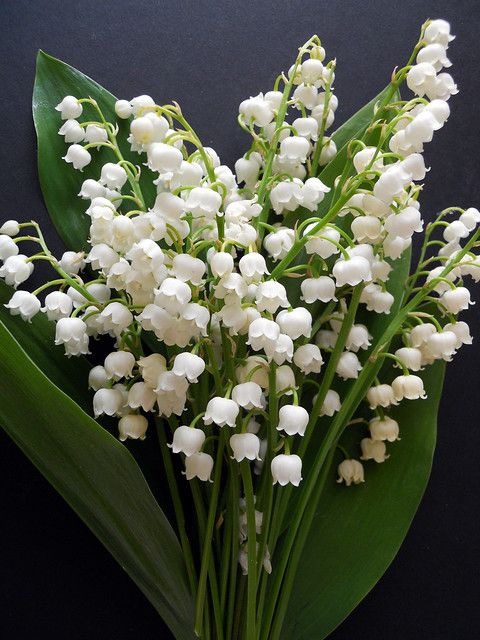
Baby's Breath (Gypsophila)
While baby’s breath is commonly known as a filler in Valentine’s bouquets, this perennial flower also thrives in the garden. Despite its delicate appearance, the tiny white flowers and thin, wispy stems are remarkably resilient in a landscape. Baby’s breath plants can thrive in dry, average soil, but they prefer alkaline conditions, which make them an ideal addition to rock gardens. One reliable variety of baby’s breath is ‘Bristol Fairy,’ which blooms from April until the end of summer.
If you’re considering adding baby’s breath to your garden, it’s important to note that this plant prefers full sun exposure and alkaline soil. It grows to a mature size of 2-3 feet tall and is deer-resistant, making it a low-maintenance option for your landscape.
Additionally, baby’s breath comes in various colors, including white, pink, orange, red, yellow, and purple, so you can choose the perfect hue to complement your garden’s existing color scheme. With a USDA growing zone range of 4 to 9, baby’s breath can be a beautiful addition to gardens across a wide range of climates.

Butterfly Weed (Asclepias tuberosa)
Butterfly Weed, also known as Asclepias tuberosa, is a plant that is popular among bees and butterflies. It features small, bright orange or yellowish flowers that bloom in clusters during the summer months. This plant thrives in full sun and is capable of withstanding drought. Although deer and rabbits do not appear to be attracted to this easy-to-grow native plant, aphids are known to be drawn to it. It is important to note that pesticides should not be used to eliminate aphids from the plant as it is a primary food source for monarch butterflies. This plant is hardy in USDA growing zones 3 to 9 and reaches a mature height of 1 to 2 feet.
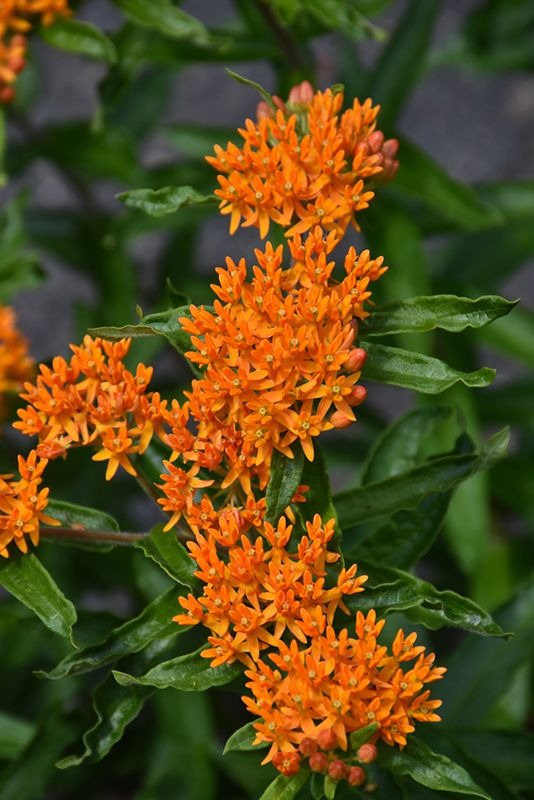
Forget-Me-Not (Myosotis)
Forget-Me-Not, also known as Myosotis, is a charming plant that can be a perfect addition to woodland gardens. This low-maintenance, short-lived perennial is a great choice for those who are looking for a pretty plant that is not eaten by rabbits and deer. Forget-me-nots readily self-seed and produce flowers for many years when planted in moist areas. The plants are covered in bright blue flowers with yellow centers, which bloom in April and May and provide a cheerful and stunning display.
If you’re thinking of adding forget-me-nots to your garden, it’s important to note that they prefer moist, well-drained soil and can grow in both full and partial sun exposure. This plant can also grow up to 1 foot tall and wide, making it a perfect choice for filling in smaller spaces. Additionally, forget-me-nots come in various color varieties, including blue, white, pink, and yellow, allowing you to choose the best color for your garden’s aesthetic.
One of the most appealing aspects of forget-me-nots is that they are deer-resistant and do not require a lot of attention or care, making them a low-maintenance option. With a USDA growing zone range of 3 to 8, forget-me-nots can be grown in a variety of climates, making them an excellent choice for gardeners across the country.

Kenilworth Ivy (Cymbalaria muralis)
Kenilworth Ivy, also known as Cymbalaria muralis or ivy-leaved toadflax, is a plant that adds texture and charm to any landscape with its attractive scalloped foliage, even when it is not in bloom. This plant produces beautiful lavender flowers that bloom from spring until fall in moist soils with partial sun exposure. This extended blooming period adds an additional layer of visual interest to the garden, making Kenilworth ivy a perfect choice for gardeners who want to create a beautiful, long-lasting display.
While Kenilworth ivy is only hardy in zones 6 and higher, it is common for the plant to self-seed in colder climates. Additionally, this plant requires moist soil, which means it is a good choice for gardens with consistent water availability. Moreover, the plant is only 2-3 inches tall at maturity, making it an excellent choice for ground cover or as a creeping plant in containers.
One of the most appealing aspects of Kenilworth ivy is that it is deer-resistant, making it a low-maintenance option for gardeners who want to avoid attracting unwanted wildlife. With a USDA growing zone range of 6 to 11, Kenilworth ivy can thrive in a variety of climates.

Egyptian Star Clusters (Pentas lanceolata)
Egyptian Star Clusters, also known as Pentas Lanceolata, are a stunning addition to any garden with their 4-inch bunches of nectar-rich flowers that attract a variety of pollinators such as bees, butterflies, and hummingbirds. These subtropical plants produce clusters of red, pink, and purple flowers that bloom for a long period. In warmer zones, such as zone 10 and 11, they can grow as perennials. Deadheading is beneficial to extend their blooming period. They prefer rich, well-draining soil and can tolerate full or partial sun exposure. These plants grow to a mature height of 24-36 inches and are deer resistant.
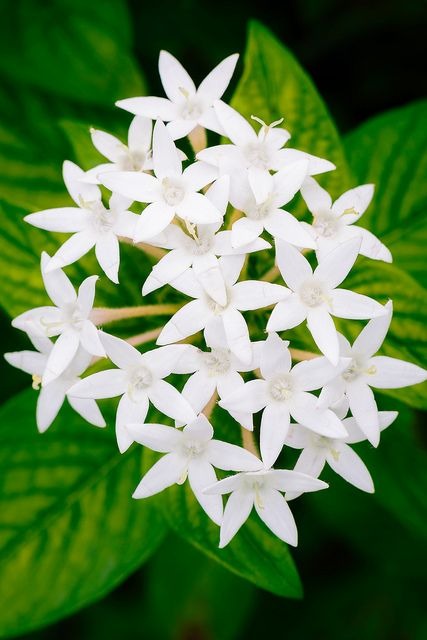
Fairy Foxglove (Erinus alpinus)
Fairy Foxglove, also known as starflower and alpine blossom, is a delicate and charming plant that features feather-like petals and dark green stems. While it is possible to grow this plant from seed, starting with a mature plant purchased from a nursery is an easier option. This plant is a great choice for rock gardens as it can thrive in any crevice or wall. What’s more, fairy foxglove can grow in partial shade, unlike many other rock garden plants.
If you’re considering adding fairy foxglove to your garden, it’s important to note that it grows to a mature size of only 2-3 inches tall, making it perfect for adding a touch of elegance to small spaces. This plant comes in beautiful shades of pink, purple, and white, so you can choose the color that best suits your garden’s aesthetic. Fairy foxglove is also adaptable to various soil types and can grow in full or partial sun.
Fairy foxglove is an ideal option for those who want a low-maintenance plant as it is deer-resistant and does not require much care. It has a USDA growing zone range of 4 to 7, making it suitable for a variety of climates. Overall, this plant is an excellent addition to any rock garden or small space in need of a delicate yet hardy plant.
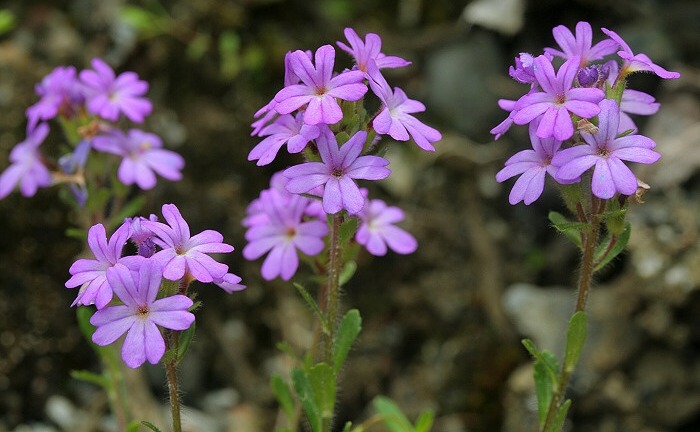
Primrose (Primula spp.)
Primroses, which belong to the Primula genus, are popular plants that produce lovely clusters of colorful flowers on strong stems in the spring. Some varieties have a single flower per stem, while others have clusters on a single stem. Most primroses are low-growing and prefer partial sun, although they can tolerate full sun with frequent watering. To prevent them from overgrowing in one area, these perennials need to be divided. They are hardy in USDA growing zones 3 to 8, but can be grown annually in other zones. However, they cannot survive long in zones 9 and up, as they require cool temperatures to survive and bloom. Primroses come in a wide range of colors, including red, pink, orange, yellow, blue, purple, and white, and are known to be deer-resistant. They prefer moist, well-drained soil.

Thyme (Thymus vulgaris)
Thyme (Thymus vulgaris) is a plant that can serve multiple purposes in the garden. Apart from being a beautiful flowering ground cover, thyme is also a popular culinary herb. One of the cultivars that is both a herb and flowering plant is ‘Italian Oregano’ thyme. The plant has thin stems with clusters of leaves that release a savory aroma and flavor when used in soups and vegetables. Thyme plants need full sun and good drainage to thrive, and they respond well to shearing after spring blooms start to fade. After trimming, purple blossoms will return in a few weeks, attracting native bees and beneficial wasps. Thyme is a hardy plant, able to grow in USDA growing zones 2 to 10, and is also deer resistant. When fully mature, thyme can reach a height of 2 to 6 inches.

Lobelia (Lobelia erinus)
Lobelia erinus, commonly known as Lobelia, is an annual plant with vivid blue flowers that are commonly used as filler plants in spring containers and hanging baskets. With the introduction of new varieties, the flowers of this plant won’t fade even when the weather gets warmer. When temperatures rise at night, the plant can be trimmed and kept well hydrated for a repeat bloom. Lobelia is hardy in USDA growing zones 6 to 8, and it grows well in well-drained soil with full sun exposure. The plant can reach a mature height of 6-9 inches tall and is resistant to deer.
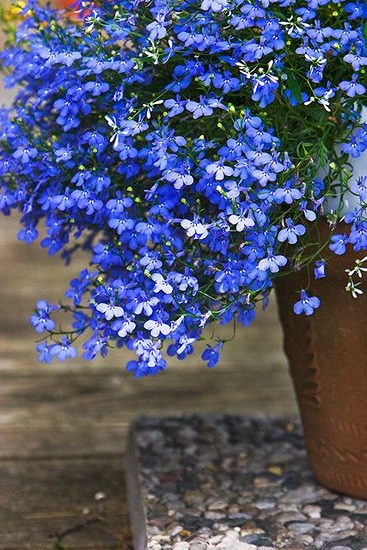
Snow-In-Summer (Cerastium tomentosum)
Snow-in-Summer, also known as Cerastium tomentosum, is a resilient perennial with silver foliage and plentiful white flowers. This plant is versatile and can be used to accent borders or fill spaces between garden pavers or crevices. Snow-in-Summer is an ideal candidate for rock gardens, thriving in full sun and sharply draining soils. It is also hardy down to zone 3, making it an excellent choice for alpine gardens. With its hardiness, this plant can withstand harsh winter conditions and will bloom profusely in the summer months. Snow-in-Summer grows up to 6-12 inches tall, and deer resistant, making it a low-maintenance addition to any garden.
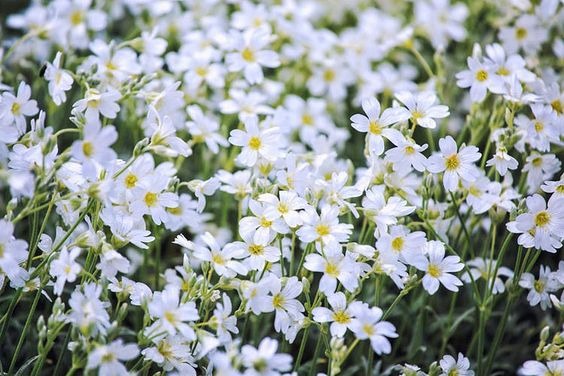
Rock Cress (Arabis)
Rock cress, also known as Arabis, is a versatile plant that is available in more than a dozen hybrids. One such hybrid, the ‘Axcent Lilac,’ has brilliant purple flowers. In the spring, the evergreen foliage is covered with hundreds of pink, purple, or blue flowers on 2 to 4-inch plants. To maintain a compact, mounding shape, it is recommended to trim the plants after they bloom. Rock cress prefers full sun and well-drained, slightly acidic soil. It is hardy in USDA growing zones 4 to 7 and is deer resistant.
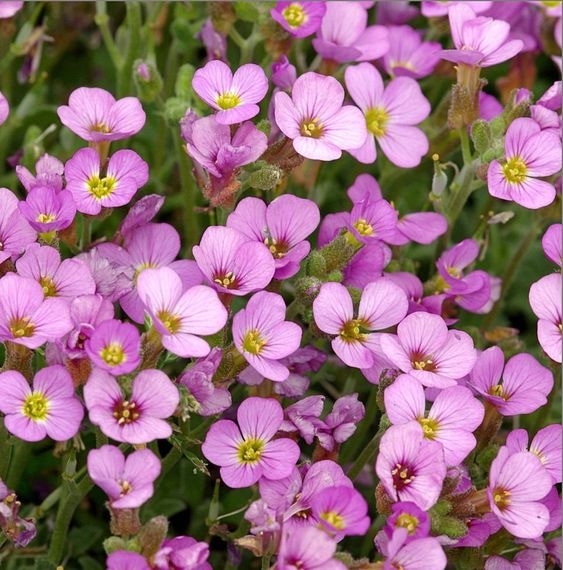
Sweet Alyssum (Lobularia maritima)
Sweet Alyssum, also known as Lobularia maritima, is a popular spring-flowering plant that produces tiny blooms with a sweet fragrance that resembles fresh honey. Gardeners can find a variety of sweet alyssum plants in garden centers or grow them from seed, producing flowers in colors ranging from pink, orange, white, yellow to red. This plant is a fast grower and seed germination often occurs within a week, and transplants thrive well in cool spring weather. Regular trimming when the blooming is sparse can rejuvenate the plant. Sweet alyssum grows well in both full and partial sun and prefers rich, loamy soil with a neutral pH. This plant is resistant to deer and can grow up to 3-10 inches tall. The USDA recommends growing sweet alyssum in zones 7 to 11.
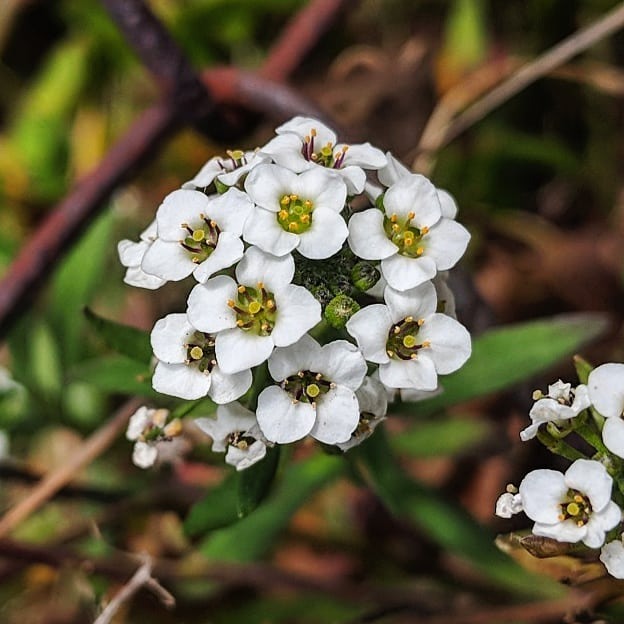
Dianthus (Dianthus spp.)
Dianthus, also known as “pinks,” is a popular flowering plant that gets its name from the fringed petal edges, which resemble the edges created by pinking shears. These beautiful plants are admired for their sweet, spicy scent, long-lasting blooms, and low maintenance. With a range of varieties, including annuals, biennials, and perennials, gardeners have many choices for color and growth habits. Dianthus flowers come in shades of pink, purple, white, yellow, red, and bi-colored, attracting hummingbirds, bees, and other pollinators to the garden. To thrive, Dianthus needs full sun and well-draining soil that is moist but not too wet. With a mature size of 6 to 36 inches tall, Dianthus is a perfect choice for borders, rock gardens, and containers. Additionally, deer do not seem to be interested in this plant.
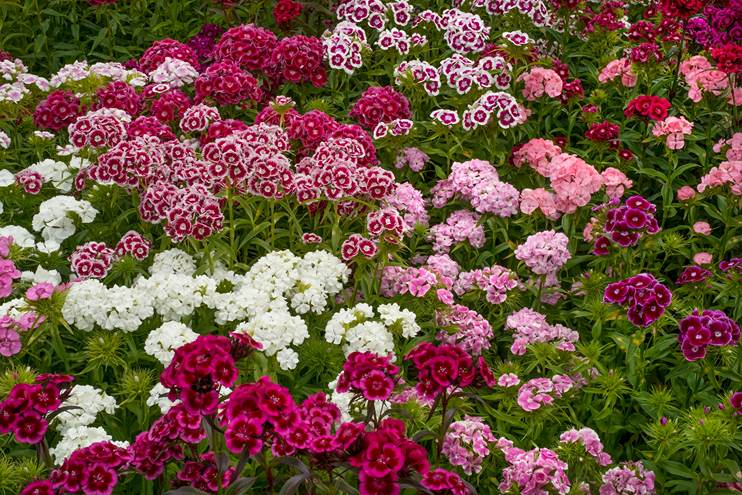
Pansy (Viola x wittrockiana)
The Pansy (Viola x wittrockiana) is a small plant that boasts a unique appearance with its face-like center markings that resemble inkblots. These charming flowers come in a variety of colors, including white, yellow, purple, and blue, and add personality to any garden. Though they do not grow to be very large, some pansies may cascade slightly. To promote more blooms, it is best to deadhead the flowers after they have faded. One of the challenges of growing pansies is their susceptibility to high heat in the summer months, but with adequate water and some shade during the hottest part of the day, they may survive. Alternatively, pansies thrive in cooler temperatures and are best grown in the spring or fall. Pansies require well-drained soil and can be grown in full or partial sun. Unfortunately, pansies are not deer-resistant.

Creeping Phlox (Phlox stolonifera)
Creeping Phlox (Phlox stolonifera) is a versatile plant with many different sizes and varieties, including low-spreading, creeping, and tall garden phlox. These perennials produce large clusters of tiny, long-lasting flowers that bloom in early spring, withstand hot summer temperatures, and continue to thrive until the first frost. They are suitable for full to partial sun exposure and thrive in rich, well-drained soil. Deadheading these flowers promotes more blooms, and they attract bees, other pollinators, and hummingbirds. Creeping Phlox is available in various colors such as purple, pink, and white. This plant’s mature size ranges from 6 to 12 inches tall, making it an excellent ground cover option. Additionally, it is deer-resistant, making it a good choice for gardens with deer problems.


